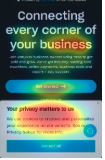Wed Apr 09 - Written by: Brendan McNulty
Week 14: Zero-Access Customer Research

(using AI to analyze customers you can’t actually see)

The Experiment
When pitching to a new client, I faced a common challenge: I had zero access to their customer data, analytics, or previous research. Without this foundation, creating meaningful strategy becomes guesswork. But I still wanted to ground my approach in something more substantial than opinions.
My goal was simple: use AI tools to generate tangible, research-like outputs that could inform a compelling pitch document – all without having a single pixel of tracking code on their site.
The Process
Here’s how I tackled it:
-
Document Analysis
- Collected all available brand and marketing documents I could find online
- Uploaded them to ChatGPT, focusing on any customer references
- Generated detailed persona profiles including demographics, psychographics, and behavioural patterns – complete with fictional quotes that captured their likely mindset
-
Review Mining for Voice of Customer
- Used Python scripts (with Claude’s help) to scrape hundreds of recent product reviews
- Fed these into ChatGPT to categorize benefits and challenges in the customers’ own words
- Created word clouds and sentiment analysis visualizations to make the patterns immediately apparent
- Extracted actual customer quotes that perfectly illustrated key pain points and satisfaction drivers
-
Predictive Attention Analysis with Visual Outputs
- Used Attention Insight to generate AI-powered heat maps of their homepage and payment page
- Produced professional-looking visualizations showing where users would likely focus and click
- Created side-by-side comparisons with competitor sites to highlight potential advantages and issues

- Simulated Usability Testing
- Used Wevo to create virtual usability tests that produced specific, actionable feedback
- Generated reports showing success/failure rates for key user tasks
- Compiled detailed recommendations with mockups of potential improvements
- Created “user quotes” that captured likely frustrations and delights
The Outcome
This process delivered concrete, presentation-ready outputs that looked remarkably similar to what you’d get from traditional research:
- Professionally formatted persona documents with photos and quotes
- Heat map visualizations highlighting UX strengths and weaknesses
- Usability reports with specific success metrics and failure points
- Actual customer language harvested from reviews to inform messaging
The review analysis proved particularly valuable – by using real customer language about benefits and challenges, I could ground my recommendations in authentic voice-of-customer insights rather than assumptions. The visual outputs from Wevo and Attention Insight were impressive enough to include directly in the presentation, giving the client tangible evidence of potential UX issues without requiring any integration with their systems.
Key Takeaway
AI research tools can produce concrete, visually impressive research outputs when traditional data access isn’t available. The review mining component provides an authentic foundation of real customer language, while the AI-generated visualizations and reports give you presentation-ready materials that feel like the result of traditional research. I wouldn’t take all of the insights to the bank (working directly with raw data will get you better insights), but it illustrates process and gets you some understanding.
Pro Tips for AI-Powered Research:
- Reviews are crucial: Real customer reviews are gold – they provide authentic language and concerns that ground all your other synthetic research.
- Create Visual Outputs: Clients respond to what they can see – heat maps, user flow diagrams, and sentiment analysis visualizations make abstract insights concrete.
- Extract Actionable Quotes: Whether from real reviews or AI-simulated testing, specific quotes make the research feel human and immediate.
- Package Findings Professionally: Present AI-generated outputs with the same care you would real research – professional formatting makes the insights more credible.
- Be Transparent But Confident: Acknowledge these are directional insights while emphasizing the real customer language from reviews as your foundation.
Want to Try It Yourself?
- Start with ChatGPT for document analysis and persona generation
- Use Python (and Claude) for review scraping and categorization
- Try Attention Insight for heatmaps and Wevo for usability testing
- Package your findings visually for maximum impact